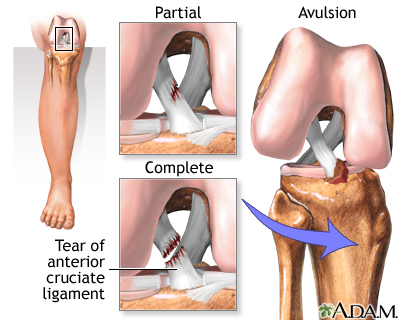Soccer – ACL injuries
Dear Friend,
Hope everyone has recovered from the heartbreak of the football last night. This weekend, I have also been down with COVID – so it really hasn’t been the best few days for me. Football (for time time being), is not coming home!
As I was scrolling through social media after the match, one thing that caught my eye was a post that highlighted the media bias when talking about mens vs women’s football. For example, the newspapers had said this is the first time the England team has reached a final on foreign soil and that they have never won the Euros. However, the England women’s team won the 2022 European Championships. A year later, they got to the final of the World Cup hosted in Australia, only to be beaten by (guess who) Spain.
It’s amazing to see that the women’s team has gained so much popularity in recent years. As I started reading into the women’s game though – one scary statistic appears. Female athletes tear their anterior cruciate ligaments (ACL) at an alarmingly higher rate in certain sports such as football compared to men.
The anterior cruciate ligament (ACL) connects the anterior part of the intercondylar eminence to the lateral femoral condyle. It prevents forward displacement of the tibia on femur. The posterior cruciate ligament (PCL) connects the posterior part of the intercondylar eminence to the medial femoral condyle. It stops backward displacement of the tibia on femur, important when going downhill.
Therefore, this week I thought I would go through some of the reasons why women are more prone to ACL injuries than men, and what can be done about it.

Higher ACL Injury Rates in Women
1. Anatomical Differences
Women’s knees have a narrower intercondylar notch, the groove in which the ACL sits, which can make the ligament more susceptible to injury. Additionally, women typically have a wider pelvis, leading to a greater angle where the femur and tibia meet (known as the Q angle). This increased angle places more stress on the knee joint.
2. Hormonal Influences
Hormones like estrogen can affect ligament strength and elasticity. Studies suggest that high levels of estrogen during the menstrual cycle can make ligaments more lax, potentially increasing the risk of ACL injuries.
3. Neuromuscular Control
Women often exhibit different neuromuscular control patterns than men. For example, they might have a tendency to land from jumps with less knee flexion and more knee valgus (inward collapse of the knee). These movement patterns can put additional strain on the ACL.
4. Muscle Strength and Activation
Research indicates that women may have less hamstring strength relative to their quadriceps compared to men. Since the hamstrings help stabilize the knee, weaker hamstrings can lead to a higher risk of ACL injuries.
5. Training and Conditioning
Differences in training and conditioning practices can also contribute to the higher incidence of ACL injuries in women. Ensuring proper training programs that emphasize strength, flexibility, and neuromuscular coordination can help mitigate these risks.
Preventive Measures
- Strength Training: Focus on strengthening the hamstrings, glutes, and core muscles to provide better support for the knee.
- Neuromuscular Training: Incorporate exercises that enhance balance, coordination, and proper landing techniques.
- Flexibility: Maintain flexibility in the hips and legs to promote better movement mechanics.
- Proper Techniques: Educate players on proper techniques for jumping, landing, and cutting movements.
- Individualized Programs: Tailor training and prevention programs to the specific needs of female athletes.
By understanding these factors and implementing targeted prevention strategies, we can help reduce the incidence of ACL injuries among female football players, ensuring they stay healthy and perform at their best.
I hope you found that an interesting read. See you next week!
Drug of the week
Procyclidine
This is a muscarinic antagonist that crosses the blood-brain barrier and is used in the treatment of drug-induced extrapyramidal disorders and in parkinsonism.
This anticholinergic drug is principally used for the treatment of drug-induced parkinsonism, akathisia and acute dystonia.
Procyclidine is also a second-line drug for the treatment of Parkinson’s disease.
It improves tremor but not rigidity or bradykinesia.

A Brain Teaser
A 20-year-old man has recently been diagnosed with an autosomal dominant condition resulting from a pathogenic variant in the FBN1 gene on chromosome 15. He is particularly tall and slender, with highly flexible joints, and also presents with an indented chest wall.
He asks his specialist if he is at particularly high risk of developing any conditions.
Given the likely diagnosis, which of the following conditions is this patient at the highest risk of developing?
A: Downward lens dislocation
B: Hypermetropia
C: Infective endocarditis
D: Pneumothorax
E: Tricuspid stenosis
Answers
The answer is D – pneumothorax
The correct answer is pneumothorax. This patient has Marfan’s syndrome, as evidenced by his tall and slender frame, hypermobility, pectus excavatum, and autosomal dominant pathogenic variant in the FBN1 (fibrillin) gene. Patients with Marfan’s syndrome are at a higher risk of developing repeated pneumothoraces. Patients with Marfan’s syndrome are more likely to develop subpleural bullae, which in conjunction with rib cage abnormalities, can increase the risk of developing pneumothoraces.
Downwards lens dislocation is incorrect. Marfan’s syndrome patients are more likely to experience an upwards lens dislocation; a downwards dislocation can occur in conditions such as homocystinuria, as well as trauma.
Hypermetropia is incorrect. Patient’s with Marfan’s syndrome are more likely to develop myopia.
Infective endocarditis is incorrect. There is no increased risk of developing infective endocarditis with Marfan’s syndrome. The risk of other cardiological abnormalities, such as aortic root dilatation, is however raised.
Tricuspid stenosis is incorrect. Rarely, tricuspid valve disease can occur in Marfan’s syndrome, but is rarer than aortic and mitral valve disease. However, tricuspid stenosis is not what this patient is at the highest risk of developing.




